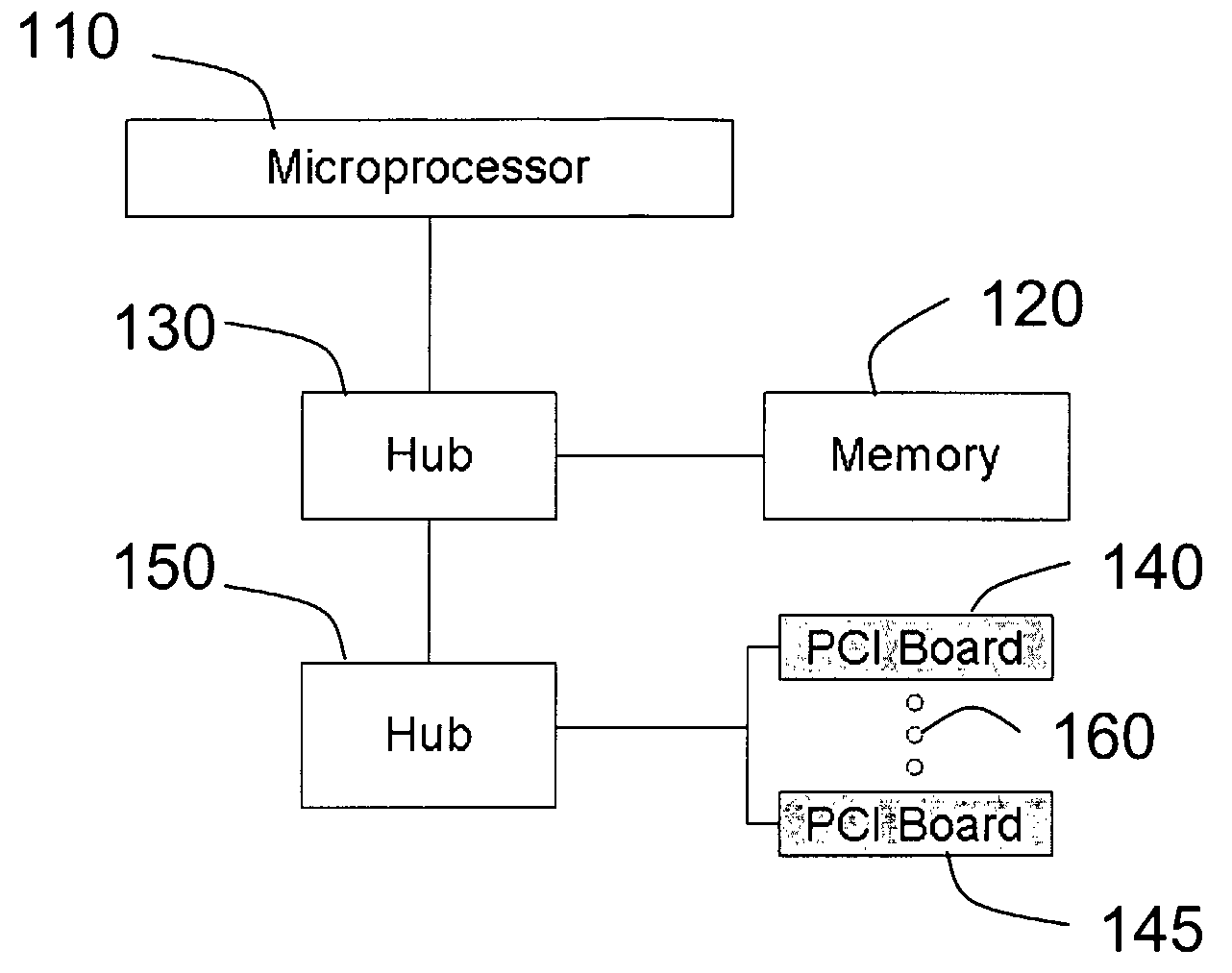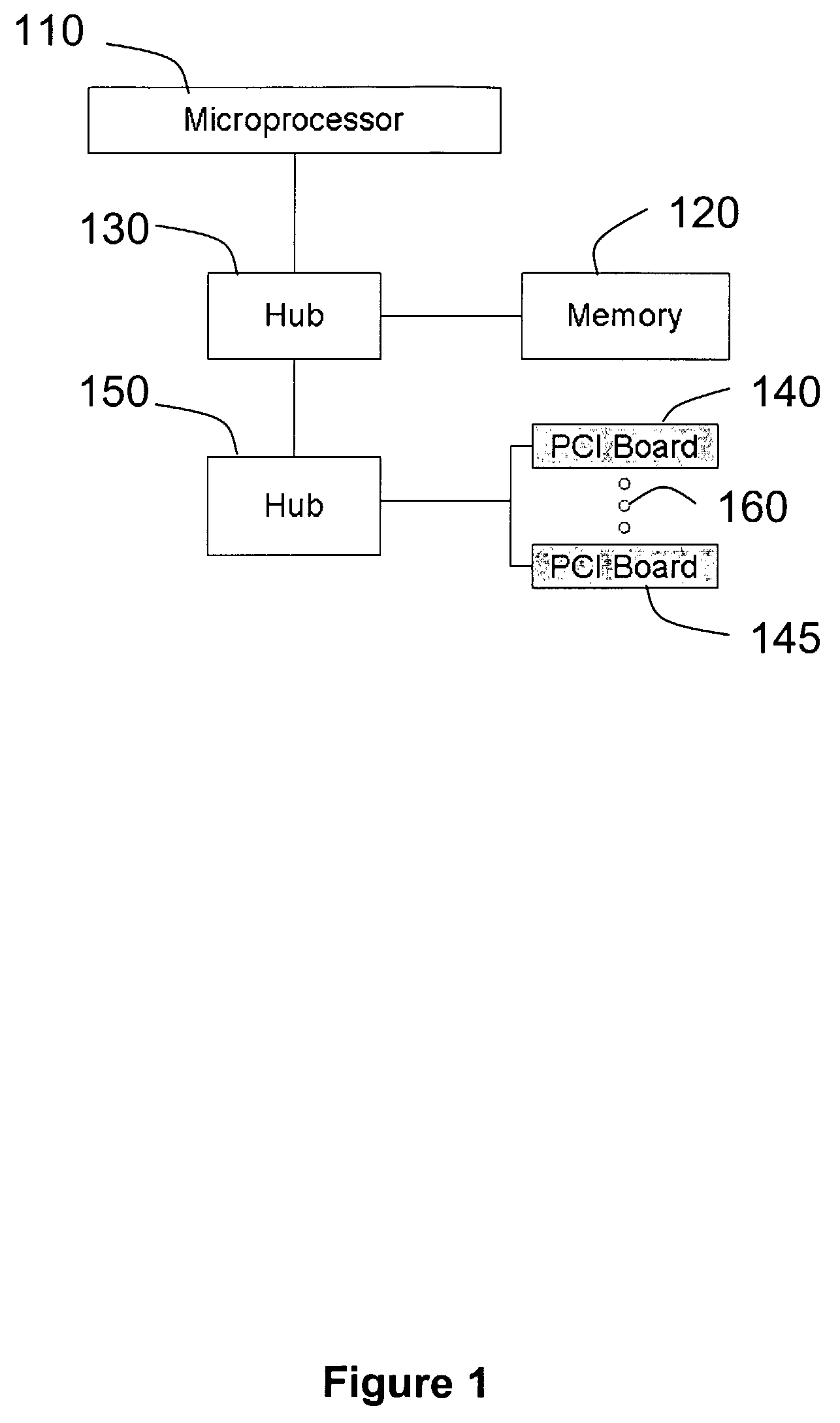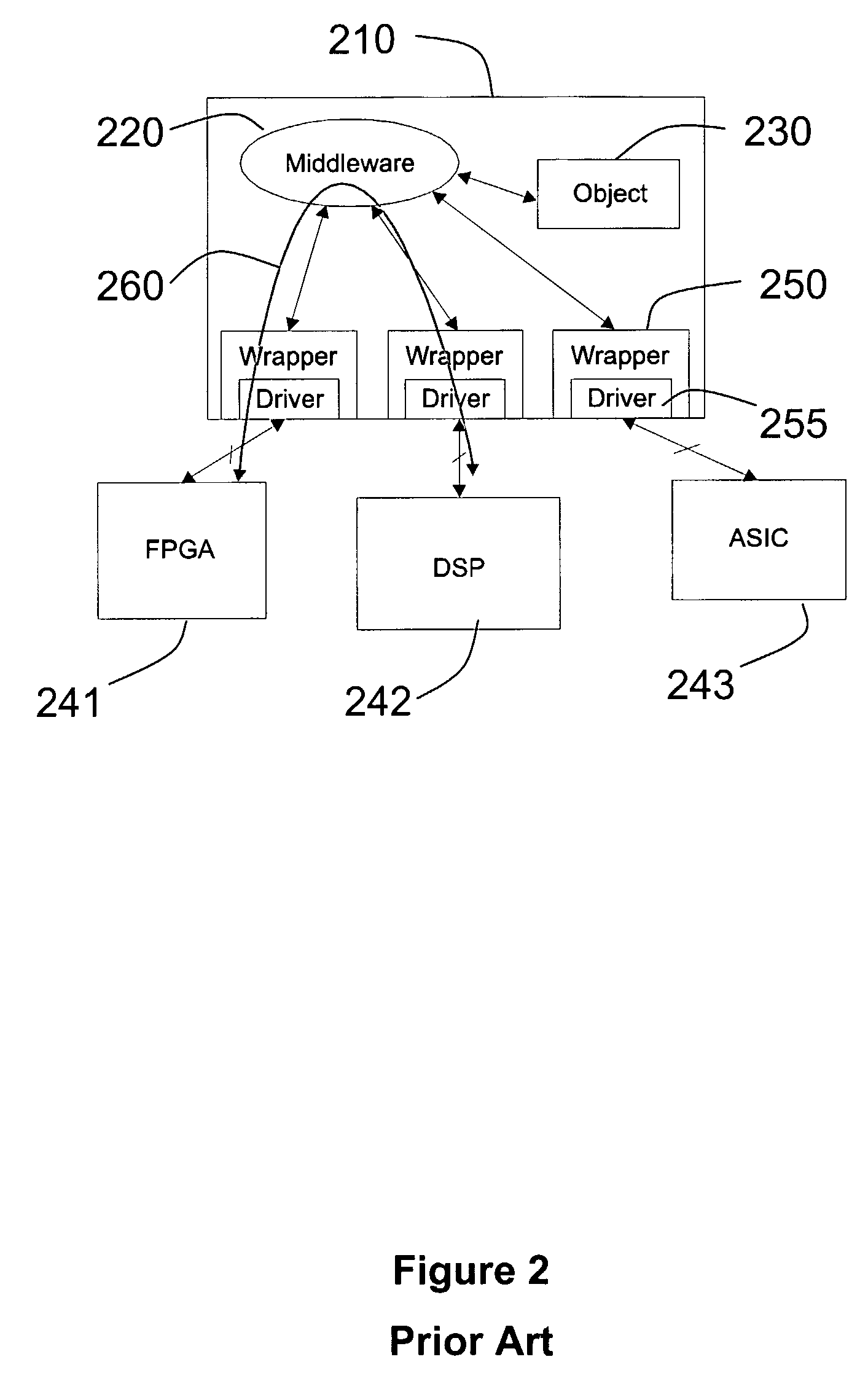Hardware Object Request Broker on a Chip for Generating Separate Control and Data Channels for Improved Throughput Efficiency
a hardware object and request broker technology, applied in the field of middleware techniques, can solve the problems of high power consumption of a given throughput and substantial bandwidth overhead, and achieve the effect of reducing bandwidth overhead
- Summary
- Abstract
- Description
- Claims
- Application Information
AI Technical Summary
Benefits of technology
Problems solved by technology
Method used
Image
Examples
Embodiment Construction
[0026]In the case of embedded devices, a basic boundary constraint arises because of the limited ability of the system to support communications between different devices when a microprocessor is used as the core component for interconnections. FIG. 1 shows the basic architecture of a typical personal computer having a microprocessor 110, a memory 120 connected to the microprocessor 110 through a hub 130, and two embedded devices (not shown) residing on PCI boards 140 and 145 (or equivalent structures), respectively, and connected to microprocessor 110 through a hub 150. The two embedded devices can communicate directly through the use of the bus 160. Therefore, the maximum sustainable rate, C, that can be supported by the system is the bus delay, or
C∝1τbus
[0027]However, when the microprocessor 110 is used to inter-connect these embedded devices, the data must be transported from an embedded device to the microprocessor 110 and then back to the target embedded device. Assuming that ...
PUM
 Login to View More
Login to View More Abstract
Description
Claims
Application Information
 Login to View More
Login to View More - R&D
- Intellectual Property
- Life Sciences
- Materials
- Tech Scout
- Unparalleled Data Quality
- Higher Quality Content
- 60% Fewer Hallucinations
Browse by: Latest US Patents, China's latest patents, Technical Efficacy Thesaurus, Application Domain, Technology Topic, Popular Technical Reports.
© 2025 PatSnap. All rights reserved.Legal|Privacy policy|Modern Slavery Act Transparency Statement|Sitemap|About US| Contact US: help@patsnap.com



